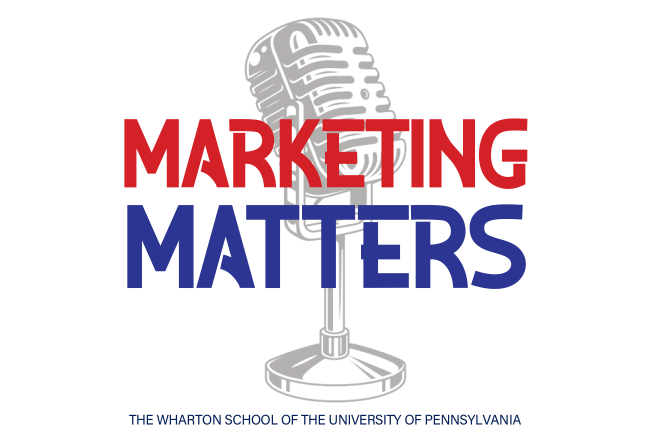Banks today are seeing their businesses disrupted by fintech – startups offering mobile payments, loans, virtual currencies and the like. To compete with digital startups and meet the heightened expectations of customers who want 24/7 access, engagement and security, Wells Fargo is actively bridging the gap between its cyber and physical operations. Jamie Moldafsky, the bank’s chief marketing officer, spoke about the company’s digital efforts on the Knowledge at Wharton show on Wharton Business Radio, which aired on SiriusXM channel 111.
She said the bank is changing to meet the needs of the digital customer, such as rethinking its marketing approach from straight-out selling to customer engagement. Wells Fargo also is interested in using biometrics tools like retina scanning to boost the security of customer information.
An edited transcript of the conversation appears below.
Knowledge at Wharton: What’s the most amazing thing for you in the banking sector right now?
Jamie Moldafsky: It’s astounding when you think about historically what a very paper-based business banking used to be, and today you don’t even say checkbook to a millennial because they don’t know what that is. We still produce checks because grandma still sends a check to her grandson or her granddaughter that has to get deposited. But all of our branches and all of our systems are digitized now. It’s been a real focus of ours, not just because it’s more efficient but because it’s really more effective in dealing with customers who expect it to be immediate and easy. That’s certainly one of the biggest changes. The other is the challenges from a regulatory standpoint that require us to do what we want to do anyway, which is be on the side of the customer and do the right things. But that level of scrutiny certainly is significantly higher than it had been in the past.
Knowledge at Wharton: When many consumers think about the banking industry, that view is still probably not as good as you would like it to be. Is that a main point you have to think about?
Moldafsky: Absolutely, because trust is so core to what we do. If you’re going to entrust a company with your money and trust that it’s going to be there when you need it and that it’s going to grow as much as you need it to, that’s really important. Trust is the underpinning of that. We spend a lot of time letting our customers know that we’re on their side and helping them be smarter and more in control of their own financial futures so that they can do the things that they want to do. But you’re right, trust was really eroded. We enjoy probably the highest trust of the large banks but nowhere near the trust levels of a Google or an Amazon or some of the other institutions that really set that bar.
Knowledge at Wharton: How do you build that trust from where it is now?
Moldafsky: For us, a lot of it is about our culture. We have a very strong culture around doing the right thing, putting the customer at the center of everything we do. It’s making that more visible. A lot of the work we’re doing is to show our customers the things that we’re doing to help them and to be as transparent as we can be. I think transparency is at the core of it. Certainly, the digital revolution has enabled that, which is people feel like they can and should be able to see everything every minute of the day if they want to. Our job is to give them access to alerts or anything that helps them know where they stand. That’s something that’s going to both engender trust and make their lives better.
“We enjoy probably the highest trust of the large banks but nowhere near the trust levels of a Google or an Amazon.”
Knowledge at Wharton: But that also means banking institutions have to make a huge investment in the security around all of these systems.
Moldafsky: Because people do entrust us with their financial future, job No. 1 today is around security and cyber security. We certainly have doubled and tripled down on that. We’ve been around 160-plus years. I think we’re known for being judicious and prudent with our customers’ trust in us, so we spend a lot of money on that.
The other thing that’s really important is we’re also trying to innovate around what’s the most secure, convenient way for people to validate and verify who they are. Biometrics is becoming an increasingly big part of what we do, so the days of having to recite all those different passwords and remember what your third transaction was last Tuesday are probably going to go away.
Ultimately, many would like us to do facial recognition or voice recognition or retina scanning or fingerprint scanning. All of those are viable options. Any two of those in combination provide an incredibly high level of security but also make so much more sense for us to say, “We know you. You don’t have to give us numbers. We actually know you.” It’s better for everybody because it is more secure, faster and easier. Over 40% of our employees, or team members as we call them, are millennials. The way we do business is not only how our customers want us to do business but how our team members want us to do business.
Knowledge at Wharton: What about the mobile payment platform that is engulfing what we do? Do the banks want to get into this realm more and just not leave it to Apple or Google or any of those companies to do it?
Moldafsky: Yes, and I think Wells Fargo is a great example where, we play with everybody. We’ll support everybody because we’ll support our customers and be where our customers want us to be.
If they want Samsung Pay or Google Pay or Android Pay, we’ll be there for them. But at the same time we feel that people don’t necessarily want to have all of those different platforms and is there a way that those can come together that’s simpler and easier for our customer?
We are working on our own solutions because we do believe that having all of the ecosystem of your financial life — whether it’s deposits or loans and a mortgage – [and bring those] together with your payments actually makes things a lot better and a lot easier. Today, they’re sort of being forced by all these different players to keep all that separate. We do believe there’s a great opportunity to bring that together in a better way in the future.
“Biometrics is becoming an increasingly big part of what we do.”
Knowledge at Wharton: One of the things that we’ve talked a lot about has been the gender inequality issue. As a woman in the C-suite with a major bank, how do you view the problem and correction over the next 20 years or so?
Moldafsky: I’m proud to say Wells has, I believe, the most diverse board in the Fortune 500. We have an extremely diverse board that we’ve put together very consciously. We believe that because we serve everybody, we have to reflect that [diversity].
The composition of our leadership has to mirror that of the communities we serve. I think that’s going to be the biggest leap — when companies and organizations realize that they can’t effectively serve their constituents without reflecting that diversity, whether it’s gender or ethnic diversity.
What’s needed is much more of a conscious effort to do so. For example, we are much more focused on our senior women leaders being on outside boards because right now there’s a dearth of women on corporate boards. So, how do we make sure we’re encouraging our women executives to go on boards?
The CFO population tends to be white and male. Wells hired this wonderful Asian woman for our middle market business who brought to the company all of her relationships within the Asian community. As a result, Wells Fargo now has a significant share in that market that we would never have had if we hadn’t had somebody who actually understood and was connected to that community. I think having some champions internally that can bring that point of view in and then an organization being open to it is the other piece, which is much more of a cultural challenge that has to be overcome.
“Over 40% of our employees, or team members as we call them, are millennials.”
Knowledge at Wharton: In terms of the marketing for a major bank, how has that changed over the last decade or so because of digital technology?
Moldafsky: It is a big shift. It’s really interesting because banks historically had branches, and that was how you marketed. You had these big, big branches that people could see and they knew their money was safe. You knew the tellers. That’s still important, but what we find is now what you almost want is the big sign but the smaller branch because what you want is for people to know you’re there. But most of our transactions by far occur digitally. What’s changed is our ability to be where our customers are when they want us, as opposed to either pulling them in or trying to find them on our terms. It’s always on the customer’s term.
Knowledge at Wharton: But a lot of the traditional methods of marketing are still very effective today. They’ve just been tweaked, right?
Moldafsky: Yes, and they certainly reflect the multi-screen viewing. Even when we do advertising, we are often matching that up against the digital experience on mobile or tablet. I don’t know about you, but my kids are never just watching TV. They’ve got at least two or three different things going on at once. We have to be on those two or three different things and make it much more engaging. But interestingly, we still do spend a fair amount of money on traditional TV advertising. We’ve changed the media mix quite a bit, but that’s because people do still watch live sports and people do still watch live events. And when they do, they engage much more emotionally and for longer than they do when they’re on a mobile device where their attention span is six or seven seconds.
As much as things are very digitally oriented, things are also very local. What we see is this kind of bifurcation between what people want to experience digitally and yet people want to very much still be part of their community. For us, investments like the Wells Fargo Center in Philadelphia and other sponsorships that we do are all about being part of that local fabric, that people see us and experience us.
We’re a major sponsor now of major league soccer, which has been a great way for us to connect on things that are passion points for a lot of our customers, for millennials, for Hispanics who really are passionate about soccer now. Wells Fargo gets to be a part of that passion point.
“What’s changed is our ability to be where our customers are when they want us, as opposed to either pulling them in or trying to find them on our terms.”
Knowledge at Wharton: What are the ways you see your job and the business of reaching the consumer changing even more in the next few years?
Moldafsky: I’d say the biggest single thing that is hard for any organization now is just the speed of change and the ability and willingness to engage with your customers. . And it’s helping provide the information and the tools that those individuals need when they need them.
I think the hardest part as a marketer today is that it’s often real time and consumers expect you to know them. They expect you to know everything about them. We’re very conservative about that because we take privacy very seriously. We’re dealing with financial services. We want people to trust us, so there’s a fine line between how much we know about them and how much we’re willing to leverage what we know about them. We always have to respect that line. One of the biggest challenges is just around this data. We have six billion transactions a year through our bank. How much of that information do we use and how do we use it? How do we make sure we earn the trust of our customers in how we use that information?
Knowledge at Wharton: Like a lot of businesses, banks have become their own tech companies as well.
Moldafsky: We are major investors in technology and see technology as being the way in which we can engage with our customer. Our branches still are vitally important to us because when there’s something important in their life, customers actually want to talk to people.
Another interesting fact is our team members give about 1.8 million hours of their lives volunteering in their communities. That’s important because people want to see the company as people. As much as there’s this tendency to say, “Yeah, I can do whatever I want to do online or through mobile,” at the end of the day you often want to talk to somebody and know that there’s somebody there who’s going to help you through it. It’s amazing to see that multi-channel opportunity.
“It’s not about selling, it’s not about teaching. It’s simply engaging [with them].”
Knowledge at Wharton: In terms of security, what are the next steps especially with the heightened watch of the government on the banking industry right now?
Moldafsky: We treat our customers’ security as the most important thing. It has to be the single most important thing. But with that comes tremendous responsibility. How are we making sure from a data standpoint and a financial standpoint that we are stable and sound and protecting our customers’ assets? There are a lot of startups that are out there, particularly in the financial-technology space, and in some ways people will borrow money from anybody. But I think there’s a very high bar of where you put your money. I think that’s why banks still exist.
It’s why Wells Fargo still invests in those physical locations and why we are investing so heavily in security right now. We work with all the government agencies to make sure that we have the latest access to the right information to do that. We really are investing significant amounts of money into proactively focusing on our customers’ security. You could wait for regulations to be passed and you could wait for people to tell you what to do, but what’s going to make the difference is that you’re out there proactively looking for ways to make sure that you’ve got the right firewalls, and within our firewall we’ve got the right detection, and within that detection we’ve got the right response back to our customers. It’s an innovation opportunity.



